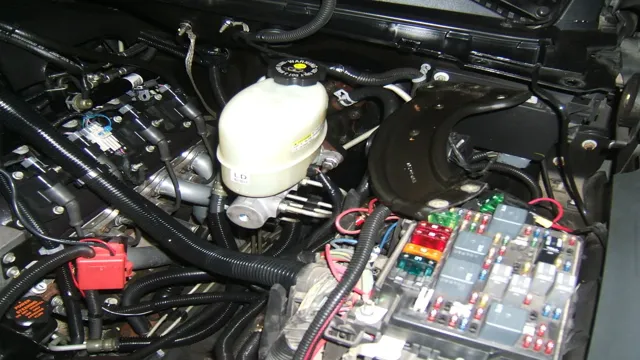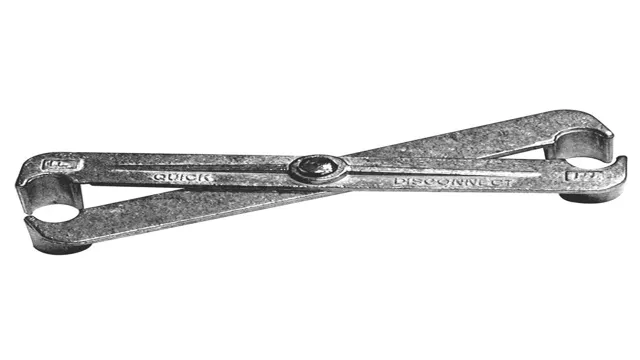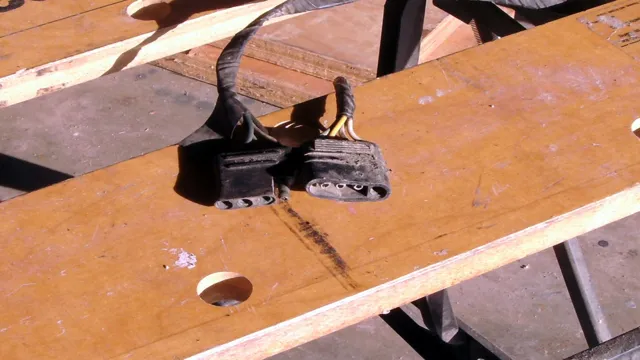Bleeding Hydroboost: A Step-by-Step Guide to Maximize Braking Performance!
If you are experiencing a soft or spongy brake pedal, it could be time to bleed your Hydroboost system. The Hydroboost is a hydraulic assist system that uses power steering fluid pressure to help with brake application. Bleeding the system is a necessary procedure that removes any trapped air from the lines.
If air is present in the Hydroboost, it can cause a loss of hydraulic pressure, leading to reduced braking ability. Don’t fret if you’ve never bled a Hydroboost system before. In this blog, we’ll break down the steps on how to bleed your Hydroboost like a pro.
Whether you’re a DIY enthusiast or a professional mechanic, you’ll find helpful tips to get the job done right. Keep reading to learn more!
What is Hydroboost?
If you’re experiencing reduced brake pressure or you can feel the brake pedal fading away when applying brakes, it could be a sign of a failing hydroboost system. Hydroboost, as the name suggests, is a hydraulic booster that uses power steering fluid pressure to increase brake pedal force. As a result, it is crucial to keep the hydroboost system in prime condition for the proper functioning of your brakes.
One of the common issues with hydroboost systems is air buildup, which can lead to a spongy brake pedal. Bleeding the hydroboost system is a straightforward process that usually involves turning the steering wheel back and forth while adding power steering fluid to expel air from the system. However, it’s recommended that you refer to your car’s manual or seek professional assistance to ensure the process is done correctly and safely.
By regularly maintaining and bleeding your hydroboost system, you can rest assured that your brakes will perform optimally and ensure your safety on the road.
Understand the Basics
Hydroboost is a hydraulic brake booster system that uses power steering fluid pressure instead of vacuum from the engine to assist in brake pedal application. It is found in vehicles equipped with power steering, and it uses the increased pressure from the power steering pump to boost the brake pedal pressure. Hydroboost helps to create a more responsive and reliable braking system, which is especially helpful in larger vehicles that require more braking power.
Essentially, Hydroboost is a type of brake booster that relies on hydraulic pressure rather than an engine vacuum to improve braking performance. So, if you’re ever driving a car or truck that has a Hydroboost system, you can rest assured that you’re operating a vehicle equipped with a top-of-the-line breaking system.

Signs of a Bleeding Hydroboost
If you’re experiencing difficulty with your brakes, one potential culprit is a bleeding hydroboost. A hydroboost is a component that uses power steering fluid to increase the force that is applied to your car’s brakes. Signs of a bleeding hydroboost can include a spongy brake pedal, a loss of brake pressure, or even a brake pedal that feels like it’s sinking to the floor.
Bleeding a hydroboost is a relatively straightforward process that you can do with a partner. Start by filling the power steering reservoir and turning the steering wheel from left to right. Then, have your partner slowly pump the brake pedal while you loosen and tighten the bleeder valve.
Repeat this process until the brake pedal feels firm and there are no more air bubbles in the fluid. Taking care of your car’s brakes is essential for your safety on the road, so if you’re not confident in your ability to bleed a hydroboost, don’t hesitate to take it to a professional mechanic for assistance.
Identify the Symptoms
One of the most common symptoms of a bleeding hydroboost is a soft or spongy brake pedal. This occurs because the hydraulic pressure required for brake assist is lost due to air entering the system through the leaking hydroboost. Another sign to look out for is a hissing noise coming from the brake booster itself, indicating a seal or gasket has failed and is allowing air to enter.
Additionally, a loss of power steering fluid or a visible fluid leak from the hydroboost unit can also indicate a problem. Any of these symptoms should prompt a visit to a mechanic for diagnosis and repair. Neglecting a bleeding hydroboost can lead to serious safety issues when it comes to braking and steering, so it’s crucial to address the problem as soon as possible.
Preparation for Bleeding
If you’re planning to bleed your hydroboost system, it’s essential to prepare adequately beforehand. The first step is to gather all the necessary tools and supplies, including a wrench, a vacuum pump, and a container to collect the old brake fluid. It’s also important to read your vehicle’s manual carefully and follow all the recommended procedures.
Once you have everything you need, start by pumping the brake pedal a few times to build up pressure in the system. Then, locate the bleeder valve on the hydroboost and attach the vacuum pump. Open the valve and watch as the old brake fluid is sucked out of the system.
Repeat the process until clean fluid is coming through, making sure to keep an eye on the fluid level in the reservoir so it doesn’t run dry. These steps will ensure a successful bleeding of your hydroboost system and maintain the safety of your vehicle on the road.
Gather the Tools and Materials
When it comes to preparation for bleeding, it’s important to gather all the necessary tools and materials beforehand. This will not only save you time in the long run but also help ensure a smooth and efficient process. You’ll need a few key items, including a tourniquet, alcohol swabs, sterile needles, and collection tubes.
Make sure to get high-quality medical-grade supplies to reduce the risk of contamination and infection. Additionally, it’s essential to have a clean and comfortable space to work in. Set up a designated area with good lighting and a sturdy table or surface.
Keep all the tools and materials organized and within reach. With these simple steps, you’ll be well-prepared for a successful and safe bleeding experience.
Step-by-Step Guide to Bleed Hydroboost
Bleeding a hydroboost system is a crucial task that involves removing any trapped air inside the brake lines. Hydroboost systems use hydraulic pressure generated by power steering pump to assist the brakes. Therefore, it is important to ensure that there is no air in the system, or else it can cause the brake pedal to feel spongy or soft.
To begin bleeding the hydroboost, first, locate the brake master cylinder and remove its cap. Then, attach a clear plastic tube to the bleeder valve and immerse the other end in brake fluid. Now, have someone pump the brake pedal several times while you open the bleeder valve.
As the pedal reaches the floor, tighten the valve and have the person release the pedal. Repeat this process until there are no more air bubbles seen in the fluid coming out of the valve. Finally, top off the brake fluid, replace the cap, and test the brakes to ensure they are functioning properly.
Following this step-by-step guide can assist you in how to bleed hydroboost in the most accurate way.
Follow These Simple Steps
Bleeding a hydroboost system is an important task that ensures proper function and safety while driving. With just a few simple steps, you can easily bleed your hydroboost and enjoy a smooth, reliable drive. First, locate your hydroboost pump and open the bleed valve.
Then, attach a clear hose to the valve and place the other end into a container to collect the brake fluid. Next, slowly pump the brake pedal several times and keep an eye on the fluid level in the reservoir. Continue pumping until the fluid coming out of the hose is free of bubbles.
Finally, close the valve, top up the fluid level in the reservoir, and test your brakes. By following these simple steps, you’ll be able to bleed your hydroboost system successfully and enjoy a safe, smooth drive.
Common Mistakes to Avoid
When it comes to bleeding hydroboost systems, there are some common mistakes to avoid if you want to avoid costly repairs and keep your system running smoothly. One of the biggest mistakes people make is not starting with a full reservoir. This will cause air to enter the system, making it more difficult to bleed.
Another mistake is not properly loosening all of the fittings before beginning the bleeding process. This can cause air to remain trapped in the system, leading to performance issues. It’s also important to note that using the wrong type of fluid can cause damage to your system.
Always check your owner’s manual before adding any fluid. Lastly, not properly priming the pump before bleeding can cause damage to your system. To avoid these mistakes and ensure a smooth bleeding process for your hydroboost system, follow the manufacturer’s instructions closely and take your time to properly bleed the system.
Prevent Damage to Your Vehicle
As a car owner, you want to keep your vehicle in the best possible condition for as long as you can. One way to do this is to avoid making common mistakes that can cause damage to your car. For instance, failing to regularly maintain your car can lead to mechanical issues and even accidents.
Another mistake to avoid is ignoring warning signals such as strange noises or fluid leaks. These signs may indicate bigger underlying problems that need to be addressed immediately. Additionally, reckless driving, such as speeding and harsh braking, can lead to premature wear and tear on your car’s tires and brakes.
By avoiding these mistakes and taking a proactive approach to maintaining your vehicle, you can help prevent unnecessary damage and prolong the life of your car.
Conclusion and Final Tips
So there you have it – bleeding the hydroboost isn’t as complex as it may seem. With a few tools, some patience, and a clear understanding of the process, you can easily purge the air from your braking system and get back to cruising the open road with confidence. Remember, bleeding is essential for ensuring proper functioning of your brakes, so don’t skip this important step.
And who knows, maybe you’ll even impress your friends with your newfound knowledge – nothing says ‘car enthusiast’ like explaining how to bleed a hydroboost with ease!”
FAQs
What is a hydroboost system and how does it work?
A hydroboost is a power assist system that helps apply force to the brakes. The system uses pressurized hydraulic fluid from the power steering pump to provide ample power to the brakes, allowing for easier stopping.
Why do I need to bleed my hydroboost system?
Bleeding your hydroboost system is necessary when air becomes trapped in the fluid lines. This can occur when the system is malfunctioning or has recently undergone repairs. Bleeding the system ensures that all air is removed and that the brakes function properly.
What are the symptoms of a hydroboost system that needs to be bled?
The symptoms of a hydroboost system that needs to be bled include soft or spongy brake pedal, decreased braking power, difficulty stopping, and a hissing noise from the pedal when it is pressed.
How do I bleed my hydroboost system?
To bleed your hydroboost system, start by topping off the power steering fluid reservoir and then locate the bleed valve on the brake caliper. Open the valve and then pump the brake pedal several times until all air is removed. Close the valve and repeat until the brakes feel firm and responsive.





